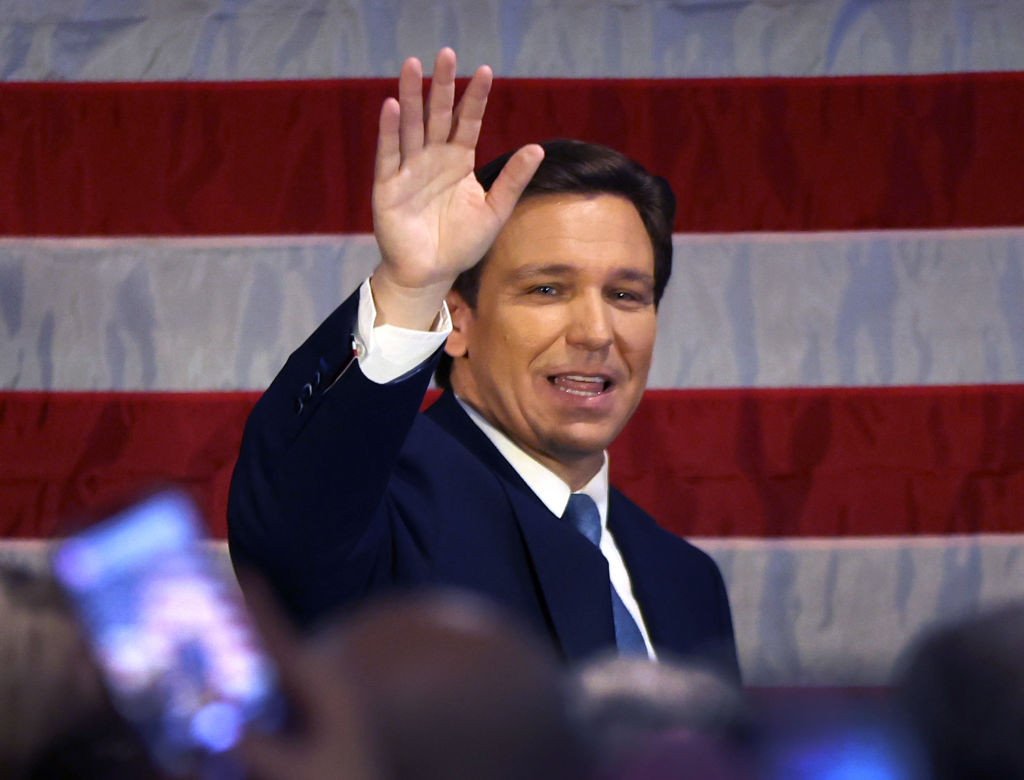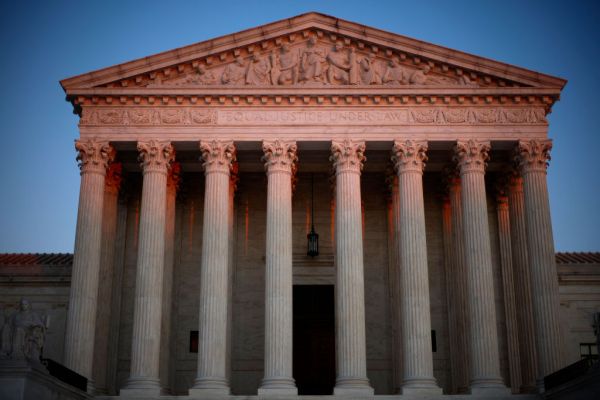Is Ron DeSantis running? From NBC:
DeSantis recently launched a tax-exempt organization that sponsored his speaking engagements to police groups in New York and the Philadelphia and Chicago suburbs last week. He hosted a retreat for top donors from across the country at the Four Seasons in Palm Beach this weekend.
Sure, but he’s also a sitting governor, right? But what’s the No. 1 tell that someone is about to launch a presidential campaign?
In 2014, Carly handed me the manuscript for her book Rising to the Challenge. It was her second book and opened with the police knocking on her door late one night. Her stepdaughter was dead from an overdose. It was a gut-wrenching story that hundreds of thousands of American families have experienced themselves. But it was also the surest sign that Carly was all in for a presidential run. Books are the new platform.
In the fall of 2006, Barack Obama published The Audacity of Hope. It rocketed to No. 1 on the New York Times bestseller list and Amazon. A few months later, he announced for president with the wind from the book in his sails. It became the standard.
In 2015 alone, we got A Time for Truth from Ted Cruz, American Dreams from Marco Rubio, A More Perfect Union from Ben Carson, Taking a Stand from Rand Paul, and Reply All from Jeb Bush.
And now? Mike Pence published So Help Me God in the last few months. Ditto Nikki Haley’s If You Want Something Done. And Mike Pompeo’s Never Give an Inch. And here comes Ron DeSantis: The Courage To Be Free. So yeah, he’s running.
Here’s an excerpt I found interesting:
I was geographically raised in Tampa Bay, but culturally my upbringing reflected the working-class communities in western Pennsylvania and northeast Ohio—from weekly church attendance to the expectation that one would earn his keep. This made me God-fearing, hard-working, and America-loving.
Perhaps because the cultural and family values were traditional, and the occupations more labor intensive, the typical Yalie would not consider the people in those communities to be sufficiently “sophisticated.” But what I came to understand was that they had an incredible amount of common sense and accumulated wisdom—far more than what I would encounter at Yale and Harvard, where entitled and tenured professors reigned as potentates, sure in the smugness of their positions but utterly unaware of the lives of most Ameircans, including those they professed to care about.
First, note the call out to western Pennsylvania and northeast Ohio. Sure, his parents are from the Mahoning Valley, but can anyone say general election? Second, he’s trying to head off the same problems J.D. Vance and Josh Hawley faced—running as a champion for the blue-collar working class while having Harvard and Yale on his résumé. Third, I’m tickled by anyone who disclaims airs of sophistication while attacking others as “potentates.”
Fourth, a few pages later he writes along this same theme noting that he’d never seen a limousine until he went to Yale. Okay, but let’s be real. I grew up at the end of a mile-long dirt road in a town of 2,800 people about an hour south of Houston. After it rained, there’d sometimes be cottonmouths curled up in our kitchen. We had a septic tank. At recess, I’d dig up tarantulas and give them to my teacher as a present, and I built a playground for my snails from the 2×4 scrap pile by the creek. My kindergarten boyfriend had more shotguns than David French has.
You grew up in Tampa Bay, my dude! There’s nothing wrong with that, but stop trying so hard! Spotting limousines isn’t the test!
(For the record, hand to God, I still don’t think I’ve ever seen a limousine—despite going to prom (Hummers and pickup trucks were the preferred mode of transportation), going to Harvard Law School (not sure why he was seeing so many limos at Yale?), and attending two white tie events here in the Swamp (black SUVs are how the really fancy people travel in D.C. My husband, however, says he has actually ridden in a limousine before … in Tampa Bay.))
Entree
I can’t believe what I’m about to type, but … there was a really interesting Twitter thread I want to talk about from this week.
It started with Harvard law professor, Democratic campaign lawyer, and sometimes conspiracy theorist Laurence Tribe, who didn’t like that former Florida Gov. and Republican presidential candidate Jeb Bush endorsed current Florida Gov. and future Republican presidential candidate Ron DeSantis.
This prompted Berkley law professor (and friend of the pod) Orin Kerr to argue that the endorsement was clearly “an anti-Trump” move, presumably something that Tribe would be all in for.
Then the Cato Institute’s Clark Neily jumped in to take up Tribe’s cause—that a bad endorsement is a bad endorsement.
Kerr responded that this was a binary choice at this point.
Neily said it was too early to write off everyone else and offered to bet that neither Trump nor DeSantis would be the nominee.
Kerr decided to make it official. $100.
They then brought in University of Pennsylvania law professor and contracts expert Dave Hoffman to ensure that the bet was legally binding—and after some back and forth on whether a GIF could count as a handshake (no, it would seem)—we’re off to the races.
So who is right?
As I noted just a few weeks ago here, Kerr certainly has the historical data on his side. Nate Cohn at the New York Times has done the research and early primary polls have been pretty predictive at this point.
“Across both parties, candidates who have led in the polls over the first six months in the year before the primary have gone on to win more than half the time since the modern primary system developed in the early 1970s,” he wrote. Reagan in 1980, Bush in 1988, Bush in 2000, Gore in 2000, Kerry in 2004, Romney in 2012, Clinton in 2016, and Biden in 2020 all fit the pattern.
Half may not sound like much until you consider how many candidates ran in each of those primaries. If all else were equal, Biden should have had a 1-in-29 shot in 2020 based on the number of candidates in the field. But based on those early primary polls, it was more like a 1-in-2 shot. Still a coin flip, but if you’re going to put $100 on the line, 50 percent is better than 3 percent.
But this is why the Kerr-Neily bet is so interesting. If Kerr had picked the frontrunner and Neily had picked the field, Kerr would be slightly favored to win based on these historical odds. But Kerr got to pick the top two candidates. How much does that help him?
Let’s look at some of the races in which the other 50 percent won—i.e., the candidate who was ahead in the first six months of primary polling did not go on to get their party’s nomination.
First up, the 2008 Democratic primary. From January through June, Hillary Clinton led every poll reliably. She averaged roughly 36 percent. Barack Obama averaged around 23 percent. Al Gore and John Edwards captured about 14 percent. And Joe Biden, Chris Dodd, Dennis Kucinich were all in the low single digits. The polls were also very consistent. Out of the 100 or so polls during that six-month period, only two broke with the pattern—and even then, they showed Obama statistically tied with Clinton. Obama didn’t begin to overtake Clinton until February 2008—slowly and then all at once, as they say.
So what can we learn from this? It was a stagnant field with a strong frontrunner and a strong second runner who kept pace 10 points behind. In the end, the guy in second won. Good news for Kerr.
Now let’s look at the 2008 GOP primary. As many of you may remember, Rudy Giuliani led in almost every poll from January through September of 2007. It’s actually remarkable to see it all fall apart. First, Fred Thompson has a run in October, but Giuliani is back in the lead—by double digits—for all of November and it looks like the threat has passed. But by December, Huckabee is suddenly winning about half the polls. And then John McCain—who had been down in single digits in some of these polls—pulled into the lead on January 9, 2008, and he never slipped from the No. 1 spot for the rest of the race.
But who was in the No. 2 slot for our all-important January through June of 2007? John McCain.
Looking at some other cycles: In 2015, there was no frontrunner in the first six months. Jeb Bush, Scott Walker, and Marco Rubio all led at various points. Aside from a few blips, Trump led in every poll a few weeks after he got into the race in the summer of 2015. In 1991, Jerry Brown was in the lead for the few polls that we’ve got—Bill Clinton, Paul Tsongas, and Bob Kerrey were all statistically tied for No. 2.
So this is all good news for Kerr. I’ve said before that I think the fundamentals of this race look a lot more like the 2008 Democratic field in which the narrative quickly fixed around Clinton as the inevitable and Obama as the upstart. The polling looks eerily similar. I even think that DeSantis shares some of Obama’s weaknesses when it comes to retail politics (neither are known for their Bill Clinton-style charisma). And I think there were plenty of ways to spot the weaknesses inherent in Rudy Giuliani’s polling lead in 2008. And the fact that there was no strong polling leader in 2015 created the space for a Donald Trump in the first place. And there is no other strong alternative to DeSantis at this point.
But what’s the best case for Neily? We’ve got quite a few known unknowns. First, Donald Trump is an old man, and it’s not hard to imagine he could get knocked off the trail. At that point, DeSantis would lose his foil and there would be room for a direct DeSantis challenger. Second, DeSantis has never run for president before (same as Rudy Giuliani). It’s a hard thing to do and a harder thing to do well. It’s not impossible for me to imagine him being pretty bad at it … although it is hard for me to believe it will matter as long as Trump is in the lead. Third, Mike Pence has a certain John McCain-circa-2007 vibe. He’s the heir apparent, and a safe, well-known-if-flawed choice. Sure, he’s not in as strong a position as McCain was at this point, but he’ll be sitting there in the wings waiting for other candidates to falter.
Bottom line: History tells us that Kerr is probably going to be $100 richer in 14 months. And that means, to his larger point, that it isn’t unreasonable to see this as a binary choice between DeSantis and Trump. Whatever DeSantis’ faults, the real question is whether he is better or worse than Trump. But if you don’t like DeSantis, is it too early to give up hope? Is a vote for Pence or Scott or Haley actually a vote for Trump like voting third party in a general election?
Whether you’re Jeb Bush or an Iowa caucusgoer, the question of whether you are Team Kerr or Team Neily looms large for Republicans who are thinking through endorsements, donations, and voting.
Dessert
Today, even if nothing else goes right, you can be grateful that you’ve learned to use your arms like a not-alien-in-a-human-suit.







Please note that we at The Dispatch hold ourselves, our work, and our commenters to a higher standard than other places on the internet. We welcome comments that foster genuine debate or discussion—including comments critical of us or our work—but responses that include ad hominem attacks on fellow Dispatch members or are intended to stoke fear and anger may be moderated.
With your membership, you only have the ability to comment on The Morning Dispatch articles. Consider upgrading to join the conversation everywhere.